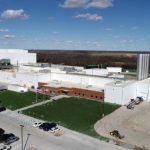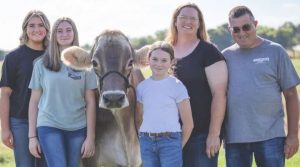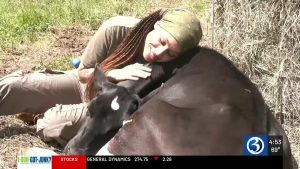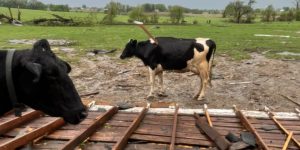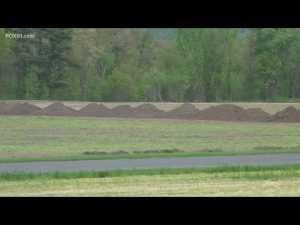
His grandfather bought his family farm near Montandon in 1919. At that time, it was 93 acres. Now, three generations later, Pardoe owns 350 acres and farms 500.
“Farming is a business,” Pardoe said. “But for many of us, it is our home, our lifestyle. Of the acres that I am farming here, 50 years ago, there were seven different family operations. And now, I am farming them all by myself. As people move on, existing farms, such as ours, purchase those farms or rent them. Like a lot of businesses, sometimes you have to get bigger to generate more income and keep up with today’s expenses.”
And increasingly, people are doing exactly that: moving on.
The Census of Agriculture that was released last week reveals that the number of farms in Pennsylvania fell by 6,156, or more than 10 percent from the last census, as the total number of farms dropped to 53,157. The Ag census occurs every five years and most recently compares 2017 to 2012.
The overall decrease in the number of farms is concerning as is the loss of 400,000 acres of farmland, said Mark O’Neill, a spokesman for the Pennsylvania Farm Bureau.
“Although we knew there was going to be a significant drop in the number of farms, seeing the decrease of more than 10 percent over a five-year period on paper was disheartening,” O’Neill said.
There are a variety of possible reasons why the number of farms have gone down, with the top two likely being declining farm income and retiring farmers. Many people may look at farming as if it is a lifestyle, said O’Neill, but it is also a business, and if farmers operate in the red year after year, they are not going to be able to remain in business.”
Pardoe’s grandfather had been a carpenter and became discouraged. His grandfather decided to try farming and this farm became available. Over the years, his father took over the farm and then he joined the operation as a partner in 1973. “I was five years out of school.”
Pardoe wasn’t surprised to hear about the decrease in the number of farms in Pennsylvania.
It has been a trend forever, Pardoe noted. “As farms consolidate, people go out of the farming business into other occupations, just like any other industry.”
Dairy farmers hurting
Dairy farms have been especially hard hit, according to the Ag Census, as indicated in the substantial drop (915 farms) in the number of dairy operations between the 2012 and 2017 census.
In addition, O’Neill said, “we have learned from USDA that the number of dairy farms decreased by another 370 farms in 2018 – meaning the total number of dairy farms entering 2019 was 6,200.”
“For the last several years,” Pardoe explained, “dairy farmers have not been able to get enough of a price for their milk to meet expenses. It’s tough. The thing about any business is the first guy has to get paid for everybody else down the line to get paid. So wherever in that chain somebody is not making their expenses, the ripple affects a whole lot of other things.
According to the Ag Census, in Montour County the number of dairy farms decreased from 49 in 2012 to 42 in 2017; in Snyder County, 137 to 115; in Union County, 144 to 133. It was only in Northumberland County where there was an increase: 77 dairy farms in 2012, 81 in 2017.
One of those farms in Snyder County was in the Beavertown area and Timothy Ferris worked there with his in-laws. “It just wasn’t feasible, money wise to keep the cattle given the price of milk,” he said, speaking for his in-laws, whose family once owned the farm. “So they sold their cattle and moved on. It was sad to see them leave farming.”
It is important to note, added O’Neill, that just because a family no longer operates a dairy farm, it does not mean they are no longer farming. Dairy farmers have been known to transition to beef operations. Or after the cows are gone, farmers may choose to still grow crops, but instead of feeding the crops to their animals, they sell them on the open market.
Grain farmers, especially those growing corn and soybeans, have also seen prices drop over the past five years, making it extremely difficult to turn a profit.
Although the census does not have a category for retired farmers, it is likely that group is responsible for some of the declining farm numbers.
“Keep in mind,” O’Neill said, “that many farmers do not have pension plans or 401Ks, so they rely on the sale of their land as their retirement policy. Farmers often look to sell their land to family members or other farmers, but sometimes that is not economically feasible or the children of farmers are not interested in becoming the next generation on the farm. In those instances, the retiring farmer may choose to sell off their land for development.”
There are some young farmers in this area, Pardoe said. “Many of them are already involved in the operation of the farm. Really the best way to get into farming is through your family.”
Pardoe sells his produce to a broker, and they in turn sell it to the local mills, he said, “such as Wengers Feed Mill up at Muncy, Kreamer Feeds.” The broker drives a truck here and in 20 minutes they can fill it up.
“It allows me time to do something else.” he said.
Farmer awards funds
Pardoe awards funds to Milton School
Pardoe recently won an award from Monsanto.
Monsanto is an American agrochemical and agricultural biotechnology corporation that existed from 1901 until 2018 when it was acquired by Bayer. Monsanto has taken an initiative to spread some of their revenues across the United States, the Ag community, in order to help grow those communities in whatever fashions necessary.
The award winner, in this case, Pardoe, was then at liberty to direct that money from Monsanto directly to a local nonprofit, in this case the Milton School District.
Winning the award was not based on anything Pardoe has done, he explained, other than entering the contest. “It’s like a lottery,” he said, “and I won. They allocate one gift of $2,500 to each county. As the winner in Northumberland County I was able to designate where the money went. I won’t see the money.”
“The big thing for me,” Pardoe said, “is that with so many children not having any exposure to agriculture anymore, everyone seems to be three generations away from being close to a farm. I want them to learn that food comes from a farm and not a supermarket. Kids today think they don’t need farms because they can just go to a supermarket.
The result of the grant money is a mobile Ag Lab, available to Milton students. The lab will be in Milton for a week. It is a closed trailer with a classroom inside it. Students can go through that laboratory and do all kinds of hands-on projects to learn about agriculture. It is catered from elementary to eighth grade.
“We are thankful for such supportive community partners who also appreciate the value of increasing agricultural literacy in today’s 21st century students,” said David L. Bittner, a teacher in the Milton Area School District. “As consumers in our world, students who are more agriculturally literate make more sustainable choices as they purchase food, fiber, and natural resource products for themselves and their families.”
This year, Milton Area Senior High School opened an approved career and technical education pathway in agricultural science for students in grades 10-12 to study full-time animal, plant, environmental, and food science as well as the mechanical technology and business of agriculture.
“We are committed to investing in the future of our graduates and our community as we foster career and college-ready graduates to meet the occupational demands of the Valley’s agricultural workforce,” Bittner said. “This program, along with the new Milton Area FFA Chapter, has received $7,500 in grants and donations from the community and we are thankful for the support of our new program.”
Agricultural opportunities
“There are lots of bright spots in agriculture, lots of opportunities,” Pardoe said. “Some of it is on the farms themselves. It’s a bit tough for dairy farmers, but some other livestock farms are doing OK. The poultry industry, swine. Agriculture also includes fruits and vegetables. I rent land to Furman’s where they grow tomatoes.”
People need to keep in mind that a lot of things start here, on a farm, Pardoe said. “We produce grain that can be used for the livestock industry. We could grow sweet corn, human food.
Corn can also be manufactured in different things, like plastics. You can take corn and wind up with corn syrup, a sweetner used in a lot of food products. There are a lot of opportunites.
“You also have to think of all the related industries that tie into agriculture, and the job opportunities. Once the crops or animals leave the farm, there are lots of people who have jobs based on what happens next: it takes a trucker to move away from the farm. Then, a processor. Meanwhile farmers buy different chemicals … and scientists have to create these formulas.
“So I think the future of agriculture is great,” he said. “Because people are always going to want to eat.”

